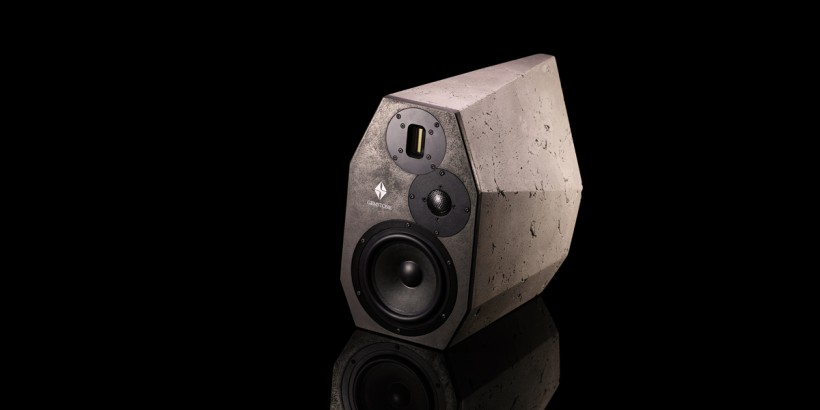Until recently the Aavik lineup comprised three differently priced yet visually identical integrated amps. The brand’s latest of the sort – Aavik I-880 – looks like an entirely different effort from another way costlier world. It was delivered to me recently and now it’s time to tell its story. Enjoy!
Invader
Over the years I’ve seen and sampled quite a few visually brilliant amps. Bakoon AMP-13R, Nagra Classic INT and Gryphon Colosseum are the three notable examples. If I were pressed to name just one device that impressed me more than any other in this regard, the discontinued Aavik U-300 would be my easy choice even today. Technically speaking this was an AiO device that packed a DAC, phono, pre and stereo power amp inside one fine enclosure. Matte black exterior with large bores on side radiators and massive control knob on the front made it one spectacular sonar-like mean machine. To me the U-300 still shows how gorgeous on eyes and cleverly executed an audio hardware can be. Its makers did their part so damn well that similarly styled enclosure rip-offs started showing up shortly past its launch. To copycats imitation is the sincerest form of flattery after all.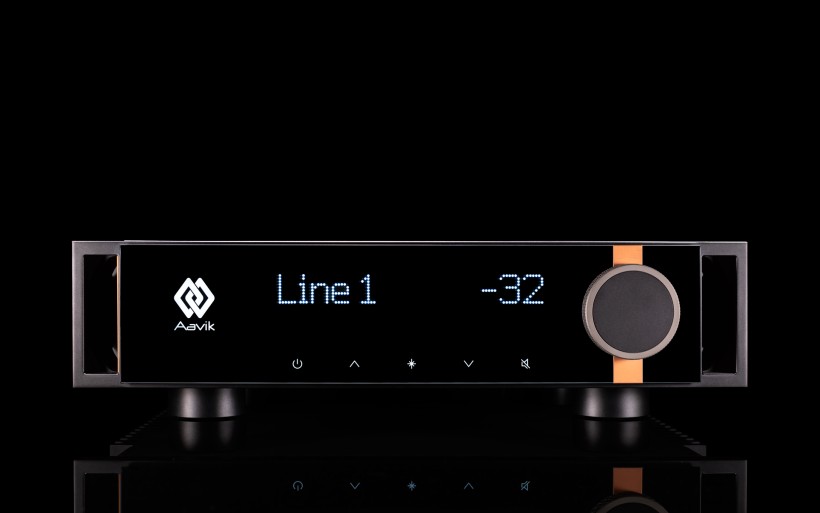 Most manufacturers, even those known for very costly products, build their designs around CNC-milled enclosures. Several years ago Aavik founders recognized this material as harmful to sound quality, so the decision was made to step away from it. That’s the primary reason why their entire 3xx range is no more. Since then the reworked Aavik lineup has its inhabitants grouped into 180/280/580 tiers and dressed in alike HDF enclosures. Upper-echelon models feature titanium reinforcements on their bonnets, copper compartments for electronics and additional homebrewed noise-trimming measures. Matte black boxes and large gloss-red dot matrix screens make all this modestly styled lot subjectively nice to look at. Little visual variety in there doesn’t match rapidly increasing price tags. In this roster extra coin buys you extra performance, not a fancier box. At least that was the case until recently.
Most manufacturers, even those known for very costly products, build their designs around CNC-milled enclosures. Several years ago Aavik founders recognized this material as harmful to sound quality, so the decision was made to step away from it. That’s the primary reason why their entire 3xx range is no more. Since then the reworked Aavik lineup has its inhabitants grouped into 180/280/580 tiers and dressed in alike HDF enclosures. Upper-echelon models feature titanium reinforcements on their bonnets, copper compartments for electronics and additional homebrewed noise-trimming measures. Matte black boxes and large gloss-red dot matrix screens make all this modestly styled lot subjectively nice to look at. Little visual variety in there doesn’t match rapidly increasing price tags. In this roster extra coin buys you extra performance, not a fancier box. At least that was the case until recently.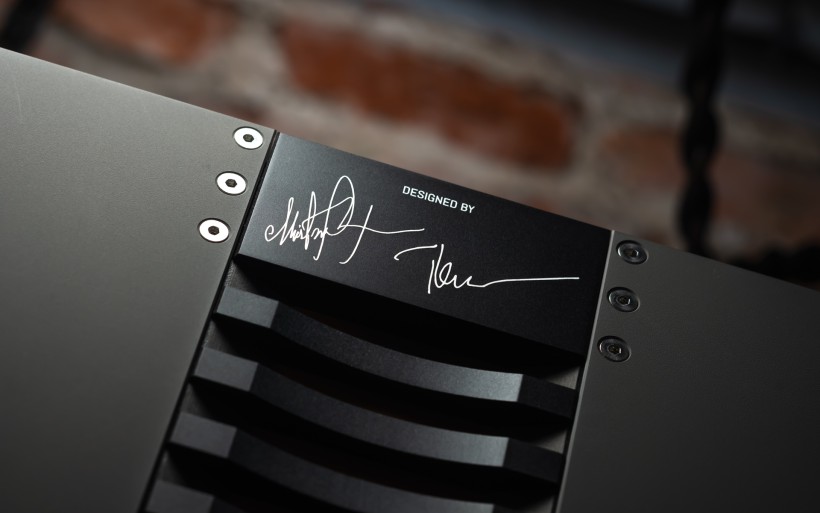 Gryphon founder Flemming Erik Rasussen joined Aavik’s parent company Audio Group Denmark in May 2021 as the visual design consultant. Since then him and the firm’s CTO/co-founder Michael Børresen were onto something. Fast forward to early 2023 and we got to know what that was, two brand new platforms visually not even remotely similar to the previous Aavik designs. Danes’ latest entry-level AiO effort named Forte was released under the company’s recently established fourth brand Axxess, while the 880 series forms the new top shelf in the Aavik roster. The integrated amp I-880 was the latter’s firstborn and its siblings already are on the market. This newcomer is quite the sight to behold and priced at €67’000 also very costly at that. Several weeks ago I had my chance to find out whether it also acts the part. Shortly past publishing the Børresen M1 story, the local Audio Group Denmark representative Jacek had one Aavik I-880 loaner available. He didn’t have to ask twice whether I’d like to have a go at this monster and see what happens. I can tell you as early as now that it happened. Boy, it happened.
Gryphon founder Flemming Erik Rasussen joined Aavik’s parent company Audio Group Denmark in May 2021 as the visual design consultant. Since then him and the firm’s CTO/co-founder Michael Børresen were onto something. Fast forward to early 2023 and we got to know what that was, two brand new platforms visually not even remotely similar to the previous Aavik designs. Danes’ latest entry-level AiO effort named Forte was released under the company’s recently established fourth brand Axxess, while the 880 series forms the new top shelf in the Aavik roster. The integrated amp I-880 was the latter’s firstborn and its siblings already are on the market. This newcomer is quite the sight to behold and priced at €67’000 also very costly at that. Several weeks ago I had my chance to find out whether it also acts the part. Shortly past publishing the Børresen M1 story, the local Audio Group Denmark representative Jacek had one Aavik I-880 loaner available. He didn’t have to ask twice whether I’d like to have a go at this monster and see what happens. I can tell you as early as now that it happened. Boy, it happened.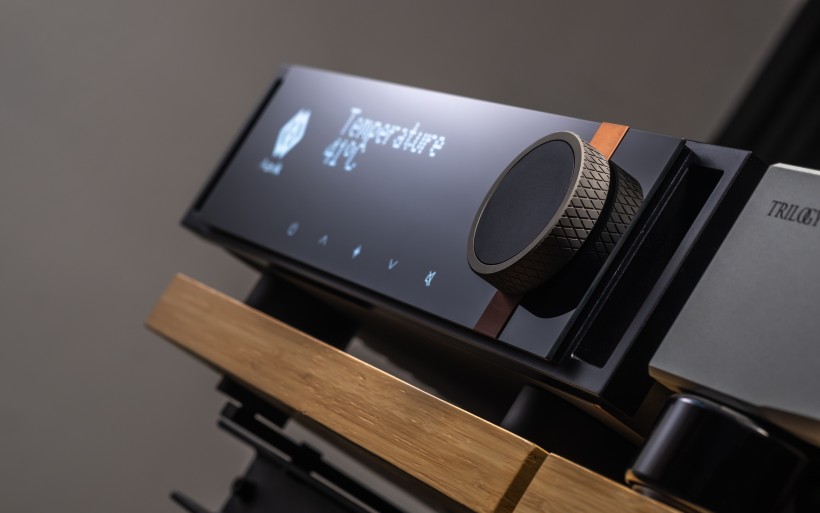 All Audio Group Products I’ve reviewed to date, including their top tier stuff, arrived inside double cardboards robust enough to survive more than one international trip. These boxes were also hardly anything fancy. The Aavik I-880 arrived in a proper flight case that showed 55kg on the scale. Jacek had to help me out with the large cargo of course. Handlebars on each its side and four twist locks allowed us to easily carry and unpack it. Once that part was done it was smooth sailing from there. The key ingredient shrouded in a cloth bag sat inside a precisely cut foamy liner. Upon extracting it I had access to the lower shallow oval compartment that housed the manual, woollen gloves and a handy sleek matte-black RC designed to work all 880-series products, including those not yet available. Standard-issue silver Apple wands were okay, but the product as costly as the I-880 really ought to have this critical accessory styled to match. Kudos to the manufacturer for finally making that effort. Four round cavities on the flight case’s bottom deck stored as many Ansuz Darkz Z2S decouplers. They’re mandatory additives for the Aavik flagship amp just as they were for the Børresen M1 speaker set. These unapologetically costly footers priced at €3’500/each are the very best anti-vibration isolators I’d sampled to date by far.
All Audio Group Products I’ve reviewed to date, including their top tier stuff, arrived inside double cardboards robust enough to survive more than one international trip. These boxes were also hardly anything fancy. The Aavik I-880 arrived in a proper flight case that showed 55kg on the scale. Jacek had to help me out with the large cargo of course. Handlebars on each its side and four twist locks allowed us to easily carry and unpack it. Once that part was done it was smooth sailing from there. The key ingredient shrouded in a cloth bag sat inside a precisely cut foamy liner. Upon extracting it I had access to the lower shallow oval compartment that housed the manual, woollen gloves and a handy sleek matte-black RC designed to work all 880-series products, including those not yet available. Standard-issue silver Apple wands were okay, but the product as costly as the I-880 really ought to have this critical accessory styled to match. Kudos to the manufacturer for finally making that effort. Four round cavities on the flight case’s bottom deck stored as many Ansuz Darkz Z2S decouplers. They’re mandatory additives for the Aavik flagship amp just as they were for the Børresen M1 speaker set. These unapologetically costly footers priced at €3’500/each are the very best anti-vibration isolators I’d sampled to date by far. Aavik I-880 measures (H x W x D) 155 x 580 x 510mm and weighs 36 kilograms, so is massive to say the least and certainly not easy to move around. On power output it’s no pushover either. This transistor type does 200/400wpc into 8/4Ω loads and here you’d think that it belongs to the class AB family. It doesn’t. Today’s Aavik has its output devices biased into class A and more about that in a bit. Further specs list THD <0.007% (10W, 1 kHz, 8 ohm), 10kΩ/50Ω input/output impedance on RCAs, 76 x 1dB volume span, pre out THD <0.005% (@1kHz, 1V input) and <1/<150W power draw on standby/idle. We don’t know how low is the output impedance on speaker taps, but with 8Ω loads it produces a damping factor in the ballpark of several hundreds.
Aavik I-880 measures (H x W x D) 155 x 580 x 510mm and weighs 36 kilograms, so is massive to say the least and certainly not easy to move around. On power output it’s no pushover either. This transistor type does 200/400wpc into 8/4Ω loads and here you’d think that it belongs to the class AB family. It doesn’t. Today’s Aavik has its output devices biased into class A and more about that in a bit. Further specs list THD <0.007% (10W, 1 kHz, 8 ohm), 10kΩ/50Ω input/output impedance on RCAs, 76 x 1dB volume span, pre out THD <0.005% (@1kHz, 1V input) and <1/<150W power draw on standby/idle. We don’t know how low is the output impedance on speaker taps, but with 8Ω loads it produces a damping factor in the ballpark of several hundreds. First let me encourage you to watch this material, in which Michael Børresen and Flemming E. Rasmussen explain their involvement in the 880 series. This talk is clearly between the engineering brain and artist, who pushed and inspired one another to make these Aaviks and this report’s I-880. Those familiar with previous Gryphon designs may agree that Flemming’s contribution to its visual identity is painfully obvious. Looks are a subjective thing of course, but that won’t stop me from naming this integrated amp as very stylish, luxurious, enjoyable to look at and perfectly put together. Then again, a device as costly as this one (€67’000 with four top level Darkz and analog x-over included) really ought to look and feel the part.
First let me encourage you to watch this material, in which Michael Børresen and Flemming E. Rasmussen explain their involvement in the 880 series. This talk is clearly between the engineering brain and artist, who pushed and inspired one another to make these Aaviks and this report’s I-880. Those familiar with previous Gryphon designs may agree that Flemming’s contribution to its visual identity is painfully obvious. Looks are a subjective thing of course, but that won’t stop me from naming this integrated amp as very stylish, luxurious, enjoyable to look at and perfectly put together. Then again, a device as costly as this one (€67’000 with four top level Darkz and analog x-over included) really ought to look and feel the part.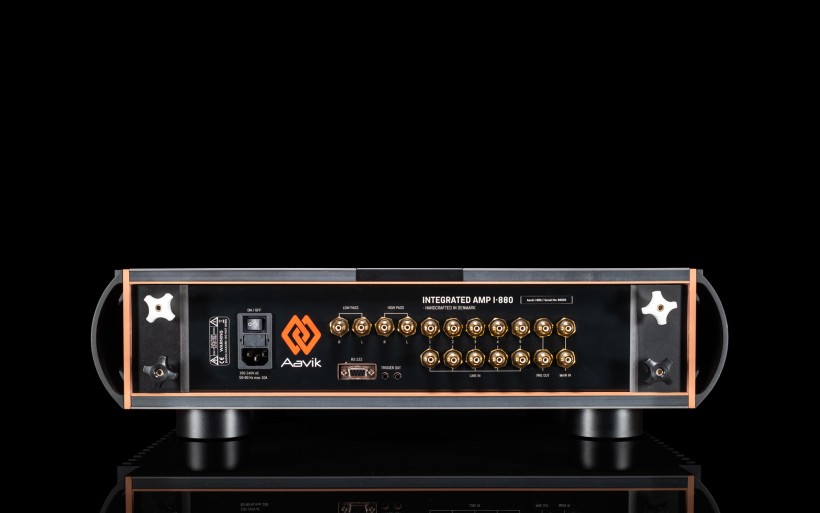 At Audio Group Denmark aluminium is forbidden, while titanium, zirconium and copper are cherished due to their mechanical and shielding properties. The Aavik I-880 accurately reflects that. Its rectangular steel front with two handlebars is busy mainly with a large tempered-glass window. A massive volume knob on the far right side has its knurled outer piece made of titanium to feel nice upon touch and is a pleasure to use. It rotates endlessly, feels weighty and has minimal resistance, while the copper vertical insert just behind tastefully breaks glassy surroundings into two elements. The large gloss-white dot matrix display shows letters perfectly readable from afar. Touch buttons just below power on/off the product, cycle through inputs, invoke the main menu and mute volume/pair additional RCs. This part of the interface is responsive and works without hiccups. I avoided it just to not leave fingerprints on the shiny reflective surface. Besides, the control wand included in the set does everything anyway. The menu allows a user to adjust preamp gain (0-15dB) and channel balance, mute the preamp output, set display brightness (10/20/40/70 and 100%) including the large Aavik logo on the left and fully dim everything. One can also check the product’s temperature (usually around 45-47°C even under stress), set the home theatre bypass input and its level, set lo/hi-pass filtering frequency and the low-pass frequency level (0.25dB within the +/-6dB range), check the current software version and bypass the in-built preamplifier stage to use the I-880 as a power amp only. The menu is quite generous and I didn’t miss anything other than the option to name individual inputs. Perhaps at some point the manufacturer will add that utility via a software update. Time will tell.
At Audio Group Denmark aluminium is forbidden, while titanium, zirconium and copper are cherished due to their mechanical and shielding properties. The Aavik I-880 accurately reflects that. Its rectangular steel front with two handlebars is busy mainly with a large tempered-glass window. A massive volume knob on the far right side has its knurled outer piece made of titanium to feel nice upon touch and is a pleasure to use. It rotates endlessly, feels weighty and has minimal resistance, while the copper vertical insert just behind tastefully breaks glassy surroundings into two elements. The large gloss-white dot matrix display shows letters perfectly readable from afar. Touch buttons just below power on/off the product, cycle through inputs, invoke the main menu and mute volume/pair additional RCs. This part of the interface is responsive and works without hiccups. I avoided it just to not leave fingerprints on the shiny reflective surface. Besides, the control wand included in the set does everything anyway. The menu allows a user to adjust preamp gain (0-15dB) and channel balance, mute the preamp output, set display brightness (10/20/40/70 and 100%) including the large Aavik logo on the left and fully dim everything. One can also check the product’s temperature (usually around 45-47°C even under stress), set the home theatre bypass input and its level, set lo/hi-pass filtering frequency and the low-pass frequency level (0.25dB within the +/-6dB range), check the current software version and bypass the in-built preamplifier stage to use the I-880 as a power amp only. The menu is quite generous and I didn’t miss anything other than the option to name individual inputs. Perhaps at some point the manufacturer will add that utility via a software update. Time will tell.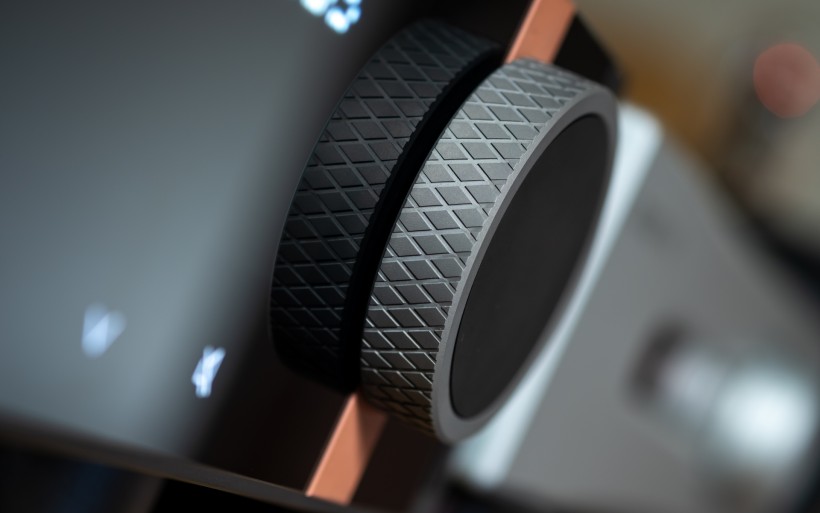 The Aavik I-880’s semi-open rounded cheeks hide large copper heat sinks armed with multiple small thick black radiator blocks, which makes the product visually less pointy from that angle and appealing. Normally such sides would net a chubby view, but the I-880’s frame is too wide for that. The bonnet built upon two plates separated via a narrow column with slightly concave shallow radiators is as interesting as all else. That row’s end piece with Michael’s and Flemming’s signatures is a tasteful touch, but the mirrored top panels comprised of titanium layers atop thick wood laminate boards are the key attractor. These plates are in fact anti-resonant inserts meant to stabilize and damp the entire structure, and so is its alike underside. All Aavik products past the 3xx range feature enclosures designed to be as mechanically stable and quiet as they can be. The I-880’s box is Michael’s best on this front, while Flemming did brilliantly on its styling.
The Aavik I-880’s semi-open rounded cheeks hide large copper heat sinks armed with multiple small thick black radiator blocks, which makes the product visually less pointy from that angle and appealing. Normally such sides would net a chubby view, but the I-880’s frame is too wide for that. The bonnet built upon two plates separated via a narrow column with slightly concave shallow radiators is as interesting as all else. That row’s end piece with Michael’s and Flemming’s signatures is a tasteful touch, but the mirrored top panels comprised of titanium layers atop thick wood laminate boards are the key attractor. These plates are in fact anti-resonant inserts meant to stabilize and damp the entire structure, and so is its alike underside. All Aavik products past the 3xx range feature enclosures designed to be as mechanically stable and quiet as they can be. The I-880’s box is Michael’s best on this front, while Flemming did brilliantly on its styling. A word about wood laminate aka HDF (high-density fiberboard) is in order. In comparison to MDF (medium-density fiberboard) it contains more wooden bits soaked in hardened resin. I was told that the enormous quality difference between these ingredients has a major impact on damping properties of the finished product. Here the rule is simple. If you want that piece heavy, dense and effective, you have to pay a lot. The manufacturer explained that the I-880’s hood and underbelly are based on the highest-grade laminate currently available, while the latter packs it between titanium and copper layers. The amp’s inside is entirely copper to fully shield electronics from the outside world. The machine sits on four massive internally hollow footers ready to accommodate Ansuz Darkz decouplers, albeit in such a way that these costly accessories remain almost entirely hidden upon installing and still maintain contact with a rack’s shelf.
A word about wood laminate aka HDF (high-density fiberboard) is in order. In comparison to MDF (medium-density fiberboard) it contains more wooden bits soaked in hardened resin. I was told that the enormous quality difference between these ingredients has a major impact on damping properties of the finished product. Here the rule is simple. If you want that piece heavy, dense and effective, you have to pay a lot. The manufacturer explained that the I-880’s hood and underbelly are based on the highest-grade laminate currently available, while the latter packs it between titanium and copper layers. The amp’s inside is entirely copper to fully shield electronics from the outside world. The machine sits on four massive internally hollow footers ready to accommodate Ansuz Darkz decouplers, albeit in such a way that these costly accessories remain almost entirely hidden upon installing and still maintain contact with a rack’s shelf.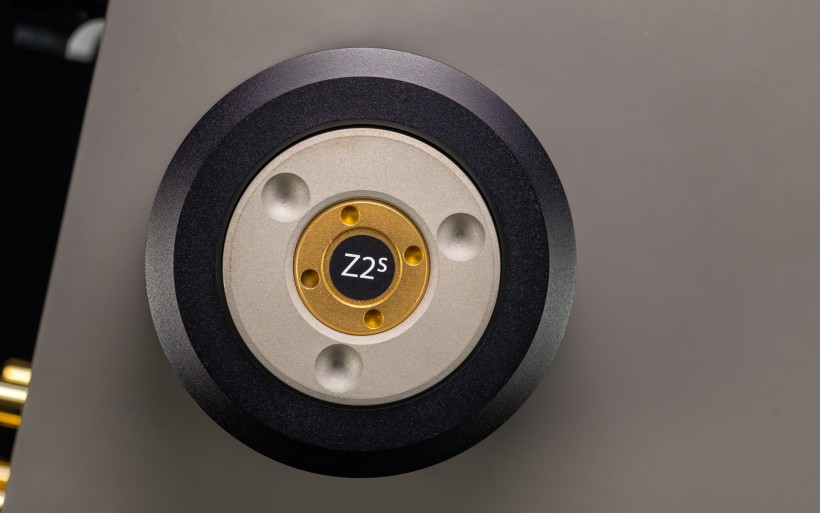 The business end features speaker terminals with threaded easy to work nuts most likely made of Polyoxymethylene aka POM. The main on/off switch near the fused IEC inlet looks like a regular power rocker, but upon flipping feels soft and more like a thermionic breaker. The RS-232 port near twin 3.5mm trigger outs is the manufacturer’s protocol of choice for software upgrades. Two RCA pairs just above are the I-880’s hi/lo-pass crossover outputs and quite special. First of all, they connect to a fully analog circuit to avoid any delays. Secondly, most integrated amps which can add a standalone sub blend its bass atop used speakers’ own low end to create unnecessary overlap. The Aavik’s filtering network essentially unlocks the option to force a sub into working below a desired frequency (low pass) and also trim a speaker set’s low end (high pass) to seamlessly connect them. That way one gets bass from just one source tailored for it (a sub), while speakers handle only the frequency range above. The I-880’s ability to distribute the workload between the two in this slider-like fashion also may be helpful in filtering out particularly nasty room modes thus limiting room gain. Srajan’s been vocal for years how effective and useful hi/lo-pass filtering is. These days most his setups are 2.1 systems built upon such networks and he’s very fond of them. Moving on, five line inputs (5-15dB /1-11dB gain and 4.5/6.5V RMS max input voltage on inputs 1-4/5 respectively) and one of each pre (7.5V) and main out close the list.
The business end features speaker terminals with threaded easy to work nuts most likely made of Polyoxymethylene aka POM. The main on/off switch near the fused IEC inlet looks like a regular power rocker, but upon flipping feels soft and more like a thermionic breaker. The RS-232 port near twin 3.5mm trigger outs is the manufacturer’s protocol of choice for software upgrades. Two RCA pairs just above are the I-880’s hi/lo-pass crossover outputs and quite special. First of all, they connect to a fully analog circuit to avoid any delays. Secondly, most integrated amps which can add a standalone sub blend its bass atop used speakers’ own low end to create unnecessary overlap. The Aavik’s filtering network essentially unlocks the option to force a sub into working below a desired frequency (low pass) and also trim a speaker set’s low end (high pass) to seamlessly connect them. That way one gets bass from just one source tailored for it (a sub), while speakers handle only the frequency range above. The I-880’s ability to distribute the workload between the two in this slider-like fashion also may be helpful in filtering out particularly nasty room modes thus limiting room gain. Srajan’s been vocal for years how effective and useful hi/lo-pass filtering is. These days most his setups are 2.1 systems built upon such networks and he’s very fond of them. Moving on, five line inputs (5-15dB /1-11dB gain and 4.5/6.5V RMS max input voltage on inputs 1-4/5 respectively) and one of each pre (7.5V) and main out close the list.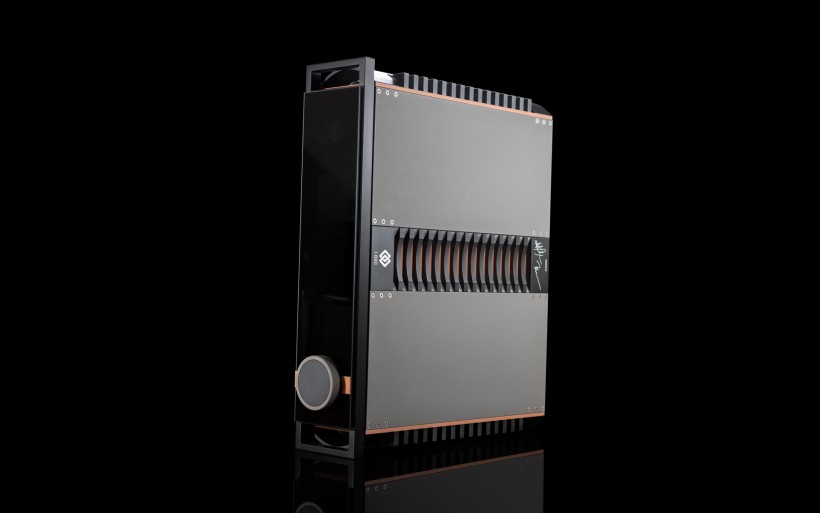 The I-880 loaner sample was too expensive to risk opening it, but I asked some questions about internals anyway. Regular as powerful class A behemoths are far larger and heavier and they run way hotter. It’s thus only fair to ask how come today’s Aavik can remain in the classiest envelope, deliver this much power and produce minimal heat. We know that this push-pull affair incorporates four pairs of Toshiba bipolar transistors per channel and driven by lateral Exicon Mosfets, which makes it a rather conventional design. Or maybe not? Don’t take my word for it, but this may be the only design which uses the latter transistors in this specific role. Anyway, the I-880’s power stage maintains the bias spread 0.63V above the current demand regardless of its position in the cycle. That’s how bipolar Toshibas can remain fully open no matter what (as in, they never switch) and have limited appetite for power, which in turn results in their lesser heat generation and higher efficiency. These transistors also rely on banks of smaller caps just next to them, which shortens the signal path and current provisions to them, and also limits internal noise. Folks at Audio Group Denmark explained that they aren’t fans of linear power supplies based on large transformers due to their finite impedance, sluggish response to momentary power spikes and too high inductance. That’s why the I-880 rocks four 500W switching-mode ‘self-resonant’ PSUs, which output sine not square-shaped waveforms. These engines also increase their switching frequency along with power consumption to increase power density upon demand and rapidly release up to 80 amps of current in total.
The I-880 loaner sample was too expensive to risk opening it, but I asked some questions about internals anyway. Regular as powerful class A behemoths are far larger and heavier and they run way hotter. It’s thus only fair to ask how come today’s Aavik can remain in the classiest envelope, deliver this much power and produce minimal heat. We know that this push-pull affair incorporates four pairs of Toshiba bipolar transistors per channel and driven by lateral Exicon Mosfets, which makes it a rather conventional design. Or maybe not? Don’t take my word for it, but this may be the only design which uses the latter transistors in this specific role. Anyway, the I-880’s power stage maintains the bias spread 0.63V above the current demand regardless of its position in the cycle. That’s how bipolar Toshibas can remain fully open no matter what (as in, they never switch) and have limited appetite for power, which in turn results in their lesser heat generation and higher efficiency. These transistors also rely on banks of smaller caps just next to them, which shortens the signal path and current provisions to them, and also limits internal noise. Folks at Audio Group Denmark explained that they aren’t fans of linear power supplies based on large transformers due to their finite impedance, sluggish response to momentary power spikes and too high inductance. That’s why the I-880 rocks four 500W switching-mode ‘self-resonant’ PSUs, which output sine not square-shaped waveforms. These engines also increase their switching frequency along with power consumption to increase power density upon demand and rapidly release up to 80 amps of current in total.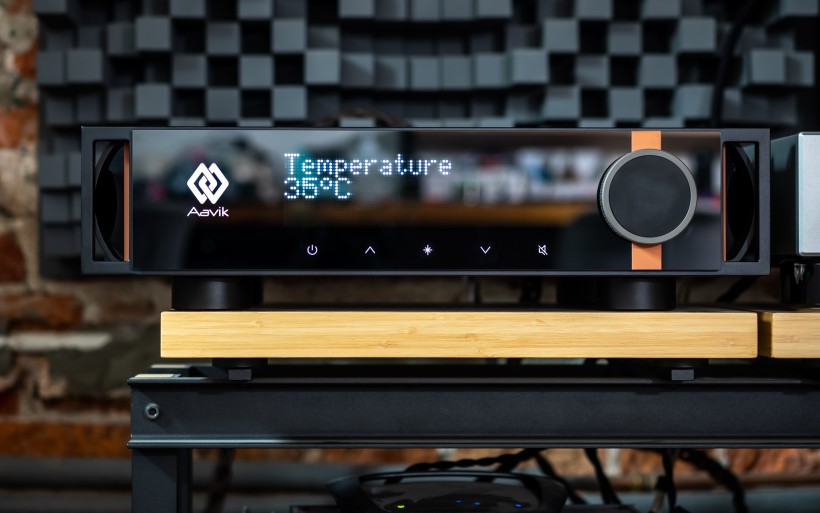 All previous Aavik amps had their volume control based on resistor ladders inside a chip, which is an elegant and popular way of trimming signal especially in the industry’s high-end land. Very few manufacturers detour from resistive devices to the arguably more kosher transformer/autoformer route particularly known for sonic quickness and transparency. Here i.e. Nagra comes to mind. In this context the Aavik seems to be somewhere in-between these two methods. Its shaft encoder coupled with a volume knob operates in the digital domain to make a nice UI, but the attenuation itself is analog and unusual. Most preamps boost signal incoming from a source to then trim it to a desired SPL, while the I-880 uses the novel inverted feedback loop to directly control the preamp’s gain factor via a 12bit ladder DAC. That’s how the signal is neither amplified nor damped, just cleanly and silently regulated. You won’t hear any clicking during attenuation and speakers remain silent when there’s no music on. To further limit switching noise, the Aavik’s input selector features LDRs (light-dependant resistors) instead of regular relays. It also packs several squads of the company’s usual noise-killers; 18 dithering circuits, 132 active Tesla coils and their 311 squared siblings. Two newcomer types to this army are 20 anti-aerial resonance Tesla coils (each with one tiny zirconium bar inside) and 4 anti-aerial Tesla cables (three bars per one cut) on binding posts. At the Audio Group Denmark HQ I was told that we don’t listen to music but multiple transients served at once. That’s why their flagship integrated amp was designed to quickly, cleanly, effortlessly and lively portray even the most intense fare, while its every internal measure had to serve this purpose one way or another. Now let’s map how all the effort that went into this project translates to its sonics.
All previous Aavik amps had their volume control based on resistor ladders inside a chip, which is an elegant and popular way of trimming signal especially in the industry’s high-end land. Very few manufacturers detour from resistive devices to the arguably more kosher transformer/autoformer route particularly known for sonic quickness and transparency. Here i.e. Nagra comes to mind. In this context the Aavik seems to be somewhere in-between these two methods. Its shaft encoder coupled with a volume knob operates in the digital domain to make a nice UI, but the attenuation itself is analog and unusual. Most preamps boost signal incoming from a source to then trim it to a desired SPL, while the I-880 uses the novel inverted feedback loop to directly control the preamp’s gain factor via a 12bit ladder DAC. That’s how the signal is neither amplified nor damped, just cleanly and silently regulated. You won’t hear any clicking during attenuation and speakers remain silent when there’s no music on. To further limit switching noise, the Aavik’s input selector features LDRs (light-dependant resistors) instead of regular relays. It also packs several squads of the company’s usual noise-killers; 18 dithering circuits, 132 active Tesla coils and their 311 squared siblings. Two newcomer types to this army are 20 anti-aerial resonance Tesla coils (each with one tiny zirconium bar inside) and 4 anti-aerial Tesla cables (three bars per one cut) on binding posts. At the Audio Group Denmark HQ I was told that we don’t listen to music but multiple transients served at once. That’s why their flagship integrated amp was designed to quickly, cleanly, effortlessly and lively portray even the most intense fare, while its every internal measure had to serve this purpose one way or another. Now let’s map how all the effort that went into this project translates to its sonics.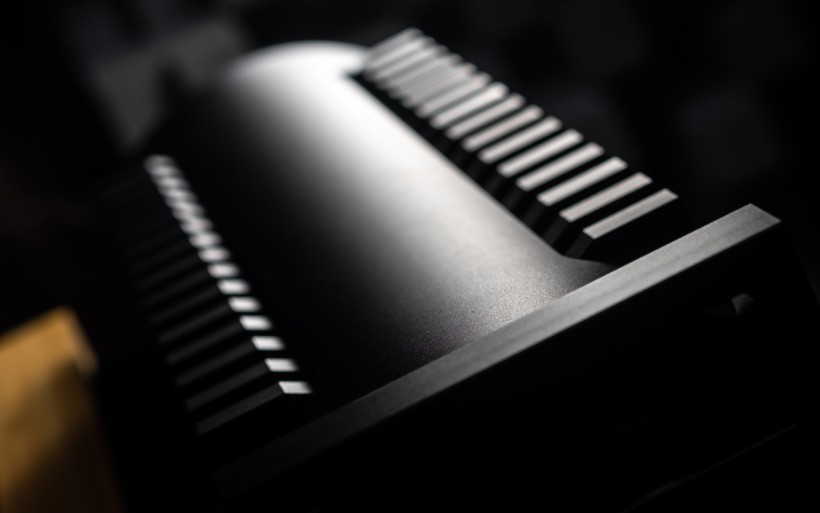 The Aavik’s integrated topology determined its spot in my setup, wherein it replaced Trilogy 915R preamp and twin 995R mono amps. The British set currently priced at nearly €67’000 was a fitting sparring partner for the I-880. Their power output into 4/8Ω loads also was identical upon setting 995Rs as class AB devices. Comparisons of products this similar on these two fronts are unlikely, so for once apples went against apples. The contestants’ output impedance set them apart, however. Trilogy 995Rs have it rather high, while the Aavik has it very low. I was about to yet again investigate how much of an impact that aspect alone has on my two speaker sets. To level the battlefield, the Dane and British set saw the same C-MARC power cords and LessLoss outlet multiplier, while Boenicke IC3 CG RCAs connected them with my DAC. One interconnect and speaker cable swap was all I had to do to move between the integrated machine and my reference analog end. Since there was no downtime, the entire routine was fairly quick and straightforward.
The Aavik’s integrated topology determined its spot in my setup, wherein it replaced Trilogy 915R preamp and twin 995R mono amps. The British set currently priced at nearly €67’000 was a fitting sparring partner for the I-880. Their power output into 4/8Ω loads also was identical upon setting 995Rs as class AB devices. Comparisons of products this similar on these two fronts are unlikely, so for once apples went against apples. The contestants’ output impedance set them apart, however. Trilogy 995Rs have it rather high, while the Aavik has it very low. I was about to yet again investigate how much of an impact that aspect alone has on my two speaker sets. To level the battlefield, the Dane and British set saw the same C-MARC power cords and LessLoss outlet multiplier, while Boenicke IC3 CG RCAs connected them with my DAC. One interconnect and speaker cable swap was all I had to do to move between the integrated machine and my reference analog end. Since there was no downtime, the entire routine was fairly quick and straightforward.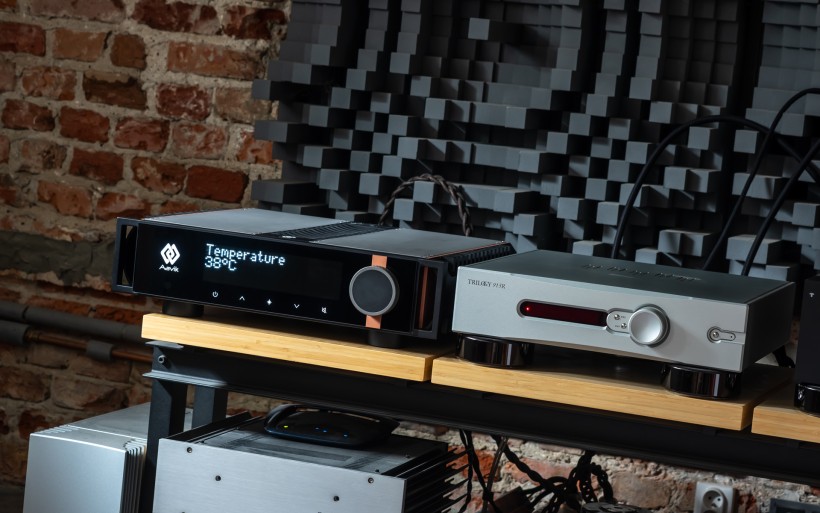 Class A amps are cherished for many reasons. They promise us a particular posh sonic flavor built upon maturity that’s free from chunk, zing, shout, grit, abnormal chiseling, harshness or any other excess. They embed vividness, admirable expressiveness, ease, fully ripe textural tissue and overall sophistication, so wholly desirable traits. Amps biased into class A neither are overly thick and syrupy, nor too ethereal and hollow. If anything, I find their gearing roughly in-between these two extremes thus nicely balanced. All the listed assets to make music nice and pretty also make such products enjoyably organic; vivid, moist and tangible. To expand on that, here I mean a pleasantly flowing voicing that’s not mechanical in the slightest. It’s fair to say that some class A devices are on the leaner side and some are fairly chunky. Some are tubed, some incorporate only transistors and there are also their hybrids. Fetching sensual qualities as the effect of big tone and textural fruitiness are the entire group’s common ground regardless. This nets a high-tiered elegance and relaxed delivery, so traits very useful in keeping fatigue at bay. Sound sources and tiny particles presented naturally and effortlessly from within their backdrop up the ante on the fatigueless front even more.
Class A amps are cherished for many reasons. They promise us a particular posh sonic flavor built upon maturity that’s free from chunk, zing, shout, grit, abnormal chiseling, harshness or any other excess. They embed vividness, admirable expressiveness, ease, fully ripe textural tissue and overall sophistication, so wholly desirable traits. Amps biased into class A neither are overly thick and syrupy, nor too ethereal and hollow. If anything, I find their gearing roughly in-between these two extremes thus nicely balanced. All the listed assets to make music nice and pretty also make such products enjoyably organic; vivid, moist and tangible. To expand on that, here I mean a pleasantly flowing voicing that’s not mechanical in the slightest. It’s fair to say that some class A devices are on the leaner side and some are fairly chunky. Some are tubed, some incorporate only transistors and there are also their hybrids. Fetching sensual qualities as the effect of big tone and textural fruitiness are the entire group’s common ground regardless. This nets a high-tiered elegance and relaxed delivery, so traits very useful in keeping fatigue at bay. Sound sources and tiny particles presented naturally and effortlessly from within their backdrop up the ante on the fatigueless front even more.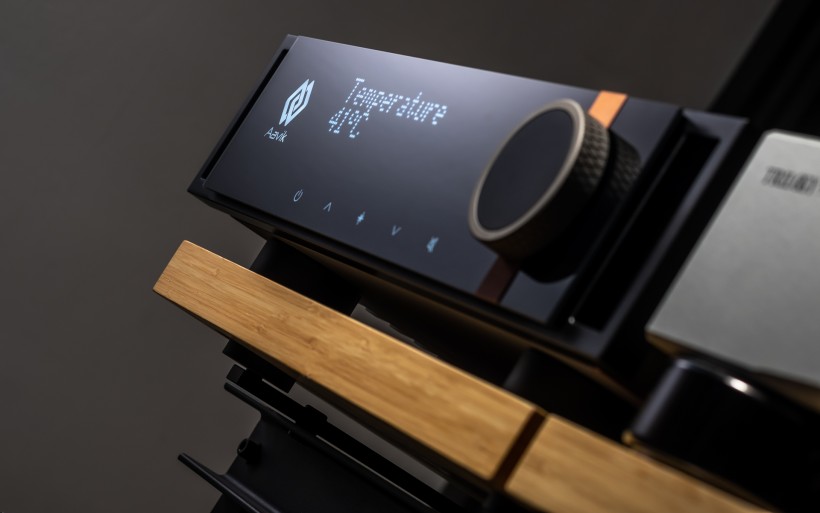 The Aavik I-880’s elegant voicing packed with all the listed traits fits the above profile to perfection. This however doesn’t change the fact that my reference three-box set biased deep into a 55/200wpc class A/AB sounds radically different. Although both the I-880 and 995R monos share the same classy backbone, they branch out in the opposite directions from there and very obviously at that. sound|kaos Vox 3afw stand mount speakers showed well how far apart the two products really were. These monitors fronted by twin British hulks sounded calmer, less impactful, rounder and bloomier than with the I-880. Their key sound sources were lazier and a touch hooded particularly on feisty music. Rapid synth bass pulses felt denser and more anchored, but also shakier. Not only the overall vibe was noticeably darker and heavier, but my room talked more. This status quo wasn’t surprising in the slightest. I saw it coming from a mile away.
The Aavik I-880’s elegant voicing packed with all the listed traits fits the above profile to perfection. This however doesn’t change the fact that my reference three-box set biased deep into a 55/200wpc class A/AB sounds radically different. Although both the I-880 and 995R monos share the same classy backbone, they branch out in the opposite directions from there and very obviously at that. sound|kaos Vox 3afw stand mount speakers showed well how far apart the two products really were. These monitors fronted by twin British hulks sounded calmer, less impactful, rounder and bloomier than with the I-880. Their key sound sources were lazier and a touch hooded particularly on feisty music. Rapid synth bass pulses felt denser and more anchored, but also shakier. Not only the overall vibe was noticeably darker and heavier, but my room talked more. This status quo wasn’t surprising in the slightest. I saw it coming from a mile away.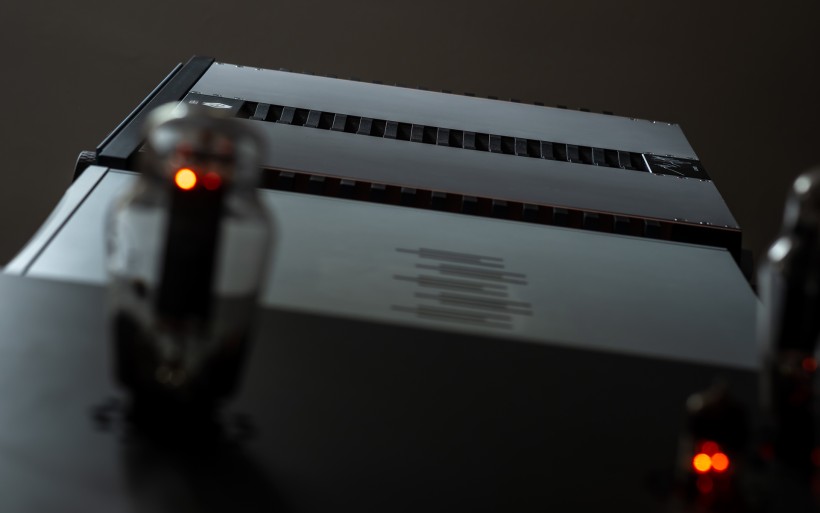 The Swiss monitor set with the I-880 produced a very different if not the opposite result; leaner, more illuminated, outlined and energized, spatially grander, less intimate and occupied via shorter key sound sources. To encapsulate this new MO, the Aavik took some meat away and felt spatially larger and more distant. A fellow enthusiast named Tomek visited me during the first comparative session. Although the I-880 had him impressed, the man clearly fancied the Vox fronted via the beefier rounder Trilogy set. Not only this, he was also puzzled about the disparity between the two amps. To him both were class A designs after all, so their vastly different profiles with the same load was the bit he couldn’t quite wrap his head around. He’d wondered where all the class A’s usual enjoyable density evaporated when the Aavik was engaged, so I gladly explained the reason that was all too familiar to me. Let’s talk about damping factor, which is the ratio of a loudspeaker’s own impedance to the amplifier’s output impedance. In short, it represents how much control an amp has over a driver’s rear strokes. The higher the amplifier’s output impedance, the lower the damping factor, which effectively means that this amp allows a cone to move more freely and effectively pump air more leisurely, which works brilliantly with some speakers. To simplify, the lower the damping factor is, the more bass we get, albeit less controlled, which often gives the impression of it being round, bloomy and dense. Conversely, high damping factor means less bass, but more authoritative, defined and impactful in its nature.
The Swiss monitor set with the I-880 produced a very different if not the opposite result; leaner, more illuminated, outlined and energized, spatially grander, less intimate and occupied via shorter key sound sources. To encapsulate this new MO, the Aavik took some meat away and felt spatially larger and more distant. A fellow enthusiast named Tomek visited me during the first comparative session. Although the I-880 had him impressed, the man clearly fancied the Vox fronted via the beefier rounder Trilogy set. Not only this, he was also puzzled about the disparity between the two amps. To him both were class A designs after all, so their vastly different profiles with the same load was the bit he couldn’t quite wrap his head around. He’d wondered where all the class A’s usual enjoyable density evaporated when the Aavik was engaged, so I gladly explained the reason that was all too familiar to me. Let’s talk about damping factor, which is the ratio of a loudspeaker’s own impedance to the amplifier’s output impedance. In short, it represents how much control an amp has over a driver’s rear strokes. The higher the amplifier’s output impedance, the lower the damping factor, which effectively means that this amp allows a cone to move more freely and effectively pump air more leisurely, which works brilliantly with some speakers. To simplify, the lower the damping factor is, the more bass we get, albeit less controlled, which often gives the impression of it being round, bloomy and dense. Conversely, high damping factor means less bass, but more authoritative, defined and impactful in its nature. Most usual speaker suspects want their large bass membranes under firm control. sound|kaos petites aren’t that. As per the above, if their rather small twin woofers are damped too much, they become short on downstairs reach and heft. This tells us two things. One, these Swiss marvels work best with zero-feedback high output Ω amps because such hardware doesn’t trim their low end. Two, the Aavik’s output impedance was too low for the Vox to land fully grounded bass. Here it’s worth noting that the Dane’s high output Ω translates into wide compliance with the vast majority of speakers out there, so it’s hardly a shocker that its makers designed it that way. This is also the reason why the I-880 works very well with Børresen speakers. As a niche type, the sound|kaos benefits the most from unusual companion amps like Trilogy’s monos specifically due to their nearly SET-like output spec. Well, at least that’s my conclusion after living with this speaker set for three years or so. Although many would find the 995Rs as the more synergistic fit for the Vox, that didn’t make the Aavik any inferior. Its quality or sonic profile didn’t even factor. Entire systems make sound, not their individual components. Every now and then these ingredients simply aren’t fond of one another, which often narrows down to the easily explainable mechanical mismatch between them. It’s really that simple, just described as lack of synergy by those who don’t connect these dots. Suffice it to say, in this context the Vox was mechanically happier with 995Rs, but that was about to drastically change and escalate into sound that I’ll remember for a long time.
Most usual speaker suspects want their large bass membranes under firm control. sound|kaos petites aren’t that. As per the above, if their rather small twin woofers are damped too much, they become short on downstairs reach and heft. This tells us two things. One, these Swiss marvels work best with zero-feedback high output Ω amps because such hardware doesn’t trim their low end. Two, the Aavik’s output impedance was too low for the Vox to land fully grounded bass. Here it’s worth noting that the Dane’s high output Ω translates into wide compliance with the vast majority of speakers out there, so it’s hardly a shocker that its makers designed it that way. This is also the reason why the I-880 works very well with Børresen speakers. As a niche type, the sound|kaos benefits the most from unusual companion amps like Trilogy’s monos specifically due to their nearly SET-like output spec. Well, at least that’s my conclusion after living with this speaker set for three years or so. Although many would find the 995Rs as the more synergistic fit for the Vox, that didn’t make the Aavik any inferior. Its quality or sonic profile didn’t even factor. Entire systems make sound, not their individual components. Every now and then these ingredients simply aren’t fond of one another, which often narrows down to the easily explainable mechanical mismatch between them. It’s really that simple, just described as lack of synergy by those who don’t connect these dots. Suffice it to say, in this context the Vox was mechanically happier with 995Rs, but that was about to drastically change and escalate into sound that I’ll remember for a long time.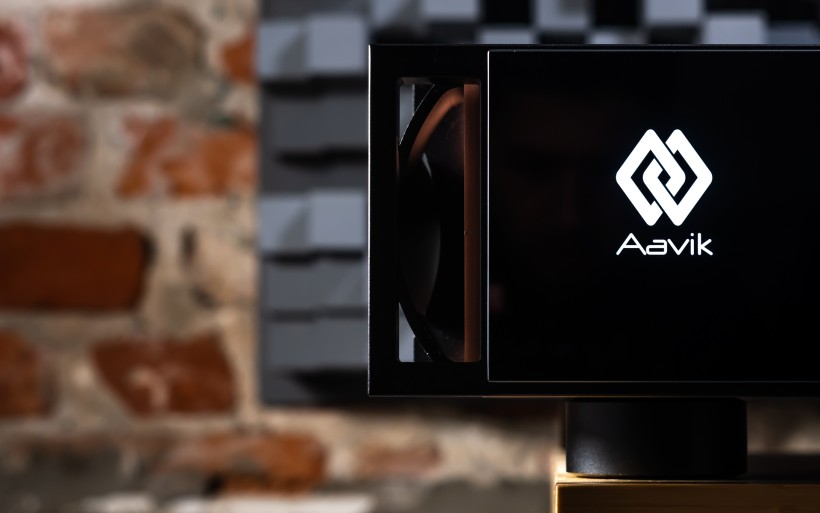 I fully understood why my colleague fancied the Trilogy/Vox set more. Large aural frames, intense colors, warmth, density and itch-free upstairs locate higher on his priority list than ripped outlines, speed, articulation, slams and the lot. Tomek’s playlist and mine rarely overlap, though. The repertoire that forms my daily diet includes unamplified instrumental and vocal music as much as genres heavy and infused with synth bass beats. Even though the I-880 with the Swiss was fairly lean and shy on the lowest bass, my ears registered quite a few things to position it above my reference set anyway, particularly on angry fare dosed at high SPL. Although power wise the Danish monster was the clear overkill for the Vox, this compact monitor type immediately tapped into extra power reserves to land the upper bass noticeably quicker, more impactful, energetic and fearless than with the Trilogy. This was dead obvious i.e. on Tool’s track “Jambi” and “Feel Good Hit of the Summer” by Queens of the Stone Age. The British set portrayed the front row close and personal, so all the key sound sources within that space were rather tall and pushed forward to effectively increase intimacy. The Aavik introduced some extra distance between the listening chair and these shapes to maintain realistic proportions. That kept the entire landscape uniformly developed from left to right and, to my great surprise, also superb on imaging depth. Still, the main difference between the two amps was in how the Vox moved air in my room with each. With the 995Rs the vibe was round, soft and relaxed if not a touch lazy, so with some delay, while the Aavik’s spatial propagation was in comparison wilder, far quicker and dynamically wider because of that. At this point Tomek and yours truly had a firm idea how the I-880 went about its business, so next we moved onto a speaker set tailored for it far more than the Vox. As far as mechanical compliance goes, this second load proved quite frankly ideal.
I fully understood why my colleague fancied the Trilogy/Vox set more. Large aural frames, intense colors, warmth, density and itch-free upstairs locate higher on his priority list than ripped outlines, speed, articulation, slams and the lot. Tomek’s playlist and mine rarely overlap, though. The repertoire that forms my daily diet includes unamplified instrumental and vocal music as much as genres heavy and infused with synth bass beats. Even though the I-880 with the Swiss was fairly lean and shy on the lowest bass, my ears registered quite a few things to position it above my reference set anyway, particularly on angry fare dosed at high SPL. Although power wise the Danish monster was the clear overkill for the Vox, this compact monitor type immediately tapped into extra power reserves to land the upper bass noticeably quicker, more impactful, energetic and fearless than with the Trilogy. This was dead obvious i.e. on Tool’s track “Jambi” and “Feel Good Hit of the Summer” by Queens of the Stone Age. The British set portrayed the front row close and personal, so all the key sound sources within that space were rather tall and pushed forward to effectively increase intimacy. The Aavik introduced some extra distance between the listening chair and these shapes to maintain realistic proportions. That kept the entire landscape uniformly developed from left to right and, to my great surprise, also superb on imaging depth. Still, the main difference between the two amps was in how the Vox moved air in my room with each. With the 995Rs the vibe was round, soft and relaxed if not a touch lazy, so with some delay, while the Aavik’s spatial propagation was in comparison wilder, far quicker and dynamically wider because of that. At this point Tomek and yours truly had a firm idea how the I-880 went about its business, so next we moved onto a speaker set tailored for it far more than the Vox. As far as mechanical compliance goes, this second load proved quite frankly ideal.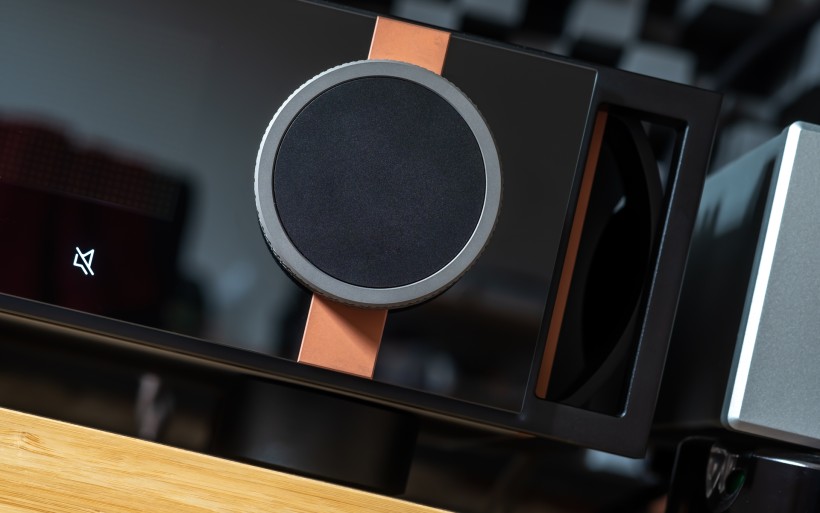 If sound|kaos monitors are utmost happy about low power and alike damping factor in my room, Boenicke W11 SE+ floorstanders have the exact opposite demands. The latter actually thrives on high power and loads of damping. When these two criteria are met, that’s when this fairly large Swiss specimen sounds at its very best. To put that into a perspective, the W11 SE+ allows one to adjust its bass output (from -1 to +2dB in 1dB steps) via its rear autoformer taps. With 995R monos I could go up to 0dB at most and still detect limited bass reach and room talk in form of mild audible smear and wobble. With the Aavik these floorstanders set at +2dB boost decompressed in my listening space without any blur and dug sensibly deeper on top of that. The drastic difference on this count between the two amps naturally stretched to control over the W11 SE+’s low end. The I-800 had that frequency range internally juicy, admirably outlined, enjoyably angry, instantaneous, powerful and all in all brilliant. To my taste that kind of bass was as good as it gets. It was so clean and authoritative that you wouldn’t tell it came from a vented box. Twin 995Rs in comparison were boomier, fuzzier, slower and sensibly shallower on the very bottom, so couldn’t compete. Suffice it to say, Tomek was stunned about the transformation he’d just witnessed. I only smiled.
If sound|kaos monitors are utmost happy about low power and alike damping factor in my room, Boenicke W11 SE+ floorstanders have the exact opposite demands. The latter actually thrives on high power and loads of damping. When these two criteria are met, that’s when this fairly large Swiss specimen sounds at its very best. To put that into a perspective, the W11 SE+ allows one to adjust its bass output (from -1 to +2dB in 1dB steps) via its rear autoformer taps. With 995R monos I could go up to 0dB at most and still detect limited bass reach and room talk in form of mild audible smear and wobble. With the Aavik these floorstanders set at +2dB boost decompressed in my listening space without any blur and dug sensibly deeper on top of that. The drastic difference on this count between the two amps naturally stretched to control over the W11 SE+’s low end. The I-800 had that frequency range internally juicy, admirably outlined, enjoyably angry, instantaneous, powerful and all in all brilliant. To my taste that kind of bass was as good as it gets. It was so clean and authoritative that you wouldn’t tell it came from a vented box. Twin 995Rs in comparison were boomier, fuzzier, slower and sensibly shallower on the very bottom, so couldn’t compete. Suffice it to say, Tomek was stunned about the transformation he’d just witnessed. I only smiled.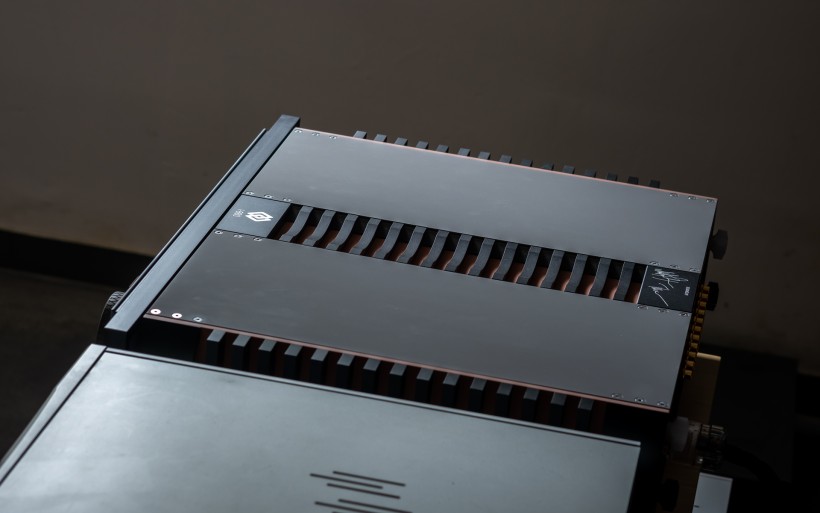 Although the Aavik introduced itself as a muscular type with silly high horsepower to tame every dastardly load I can think of, its skillset went significantly beyond just that. As I’ve mentioned above, this class A type also proved its excellence on tone. Textural filler within all instruments and voices was admirably complex and color wise spot on intense and saturated. When I listen to the Trilogy set, my attention instantly is on the upper bass and midrange, simply because that’s where its tonal center of gravity is. The Aavik has that ideally in the middle without any detectable bumps and dips, which atop the reference saturation level largely contributes to perceiving the Dane’s sound as very balanced and coherent. Because this integrated deck does everything on a commensurably high uniform level, it won’t draw your attention to one specific aspect. Meanwhile, its off-the-charts agility, quickness and snap are just a handy wrapper for all this. Actually, this sheer speed and the associated immediate reaction to even the most complex passages in music are the only two true stand outs. Then again, these traits boost vividness and keep things fresh, spicy and proper electric on intense tracks. Since there’s no such a thing as excessive dynamics, I have nothing against that sporty highly caffeinated behavior.
Although the Aavik introduced itself as a muscular type with silly high horsepower to tame every dastardly load I can think of, its skillset went significantly beyond just that. As I’ve mentioned above, this class A type also proved its excellence on tone. Textural filler within all instruments and voices was admirably complex and color wise spot on intense and saturated. When I listen to the Trilogy set, my attention instantly is on the upper bass and midrange, simply because that’s where its tonal center of gravity is. The Aavik has that ideally in the middle without any detectable bumps and dips, which atop the reference saturation level largely contributes to perceiving the Dane’s sound as very balanced and coherent. Because this integrated deck does everything on a commensurably high uniform level, it won’t draw your attention to one specific aspect. Meanwhile, its off-the-charts agility, quickness and snap are just a handy wrapper for all this. Actually, this sheer speed and the associated immediate reaction to even the most complex passages in music are the only two true stand outs. Then again, these traits boost vividness and keep things fresh, spicy and proper electric on intense tracks. Since there’s no such a thing as excessive dynamics, I have nothing against that sporty highly caffeinated behavior.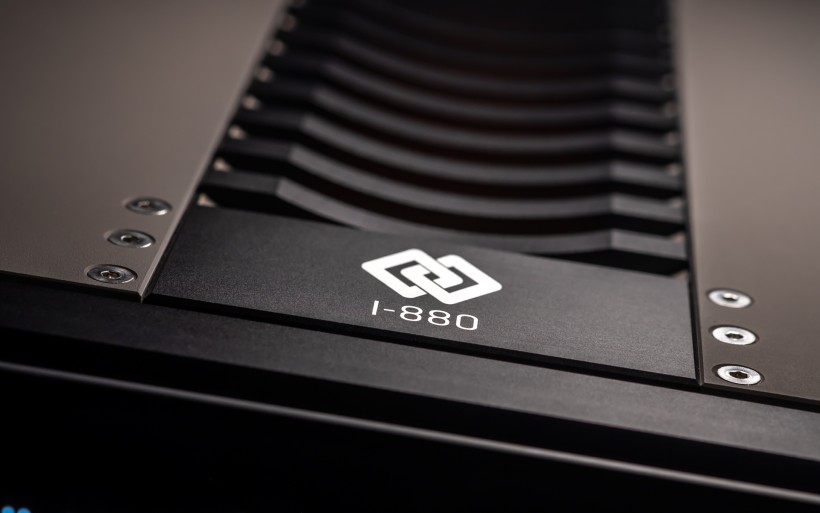 Predominantly fast amps which also keep up on smoothness, composure and textural generosity are very rare. The Aavik is one of them. Its inherently zesty rapid disposition keeps dullness and sluggishness at the door. Nervousness of any kind also wasn’t invited and there’s a good reason why not. All the noise-rejecting measures packed inside this machine make it a remarkably clean and smooth sounding product. As long as nicely recorded music is on, the I-880 won’t know how to shout and pierce. Its backdrop as black as they come also plays the enabler for pretty much every other virtue the Dane boasts, or rather casually communicates, because it executes even the most difficult tasks without any struggle. The thoroughly sorted background baked into its profile allowed it to land highly articulated pinpoint accurate internally moist sound sources as easily as thunderous swift blows from the infra realm. All these uniformly distributed assets worked in unison towards sound that was as sophisticated and tastefully done as it was dynamically gifted to my ears. With speakers along the lines of Boenicke W11 SE+, my reference analog end couldn’t pull off all this on the Aavik’s level.
Predominantly fast amps which also keep up on smoothness, composure and textural generosity are very rare. The Aavik is one of them. Its inherently zesty rapid disposition keeps dullness and sluggishness at the door. Nervousness of any kind also wasn’t invited and there’s a good reason why not. All the noise-rejecting measures packed inside this machine make it a remarkably clean and smooth sounding product. As long as nicely recorded music is on, the I-880 won’t know how to shout and pierce. Its backdrop as black as they come also plays the enabler for pretty much every other virtue the Dane boasts, or rather casually communicates, because it executes even the most difficult tasks without any struggle. The thoroughly sorted background baked into its profile allowed it to land highly articulated pinpoint accurate internally moist sound sources as easily as thunderous swift blows from the infra realm. All these uniformly distributed assets worked in unison towards sound that was as sophisticated and tastefully done as it was dynamically gifted to my ears. With speakers along the lines of Boenicke W11 SE+, my reference analog end couldn’t pull off all this on the Aavik’s level. Just to be clear, the Trilogy set fares brilliantly on easier speaker jobs, which is why I don’t see it as inferior either. It’s a personal bias, but I enjoyed how it rendered closer thus more intimate space particularly with the spatially mental Vox. The Aavik on the other hand played it big and bold in all directions with remarkable depth, while its key frames put on stage traded in some of their seductiveness and romance for honesty and correctness. Disparities on color further separated the contestants. The Aavik’s palette was sensibly cooler yet wider and intensely saturated all the way, while the Brit had it narrower, warmer and filled mainly with happy autumn colors. Pick your poison and follow accordingly. More importantly, I didn’t expect hearing an integrated amp this refined on all counts, wholesome and all in all impressive. I think that those who plan auditioning the I-800 may agree that this is a fair description of what it does.
Just to be clear, the Trilogy set fares brilliantly on easier speaker jobs, which is why I don’t see it as inferior either. It’s a personal bias, but I enjoyed how it rendered closer thus more intimate space particularly with the spatially mental Vox. The Aavik on the other hand played it big and bold in all directions with remarkable depth, while its key frames put on stage traded in some of their seductiveness and romance for honesty and correctness. Disparities on color further separated the contestants. The Aavik’s palette was sensibly cooler yet wider and intensely saturated all the way, while the Brit had it narrower, warmer and filled mainly with happy autumn colors. Pick your poison and follow accordingly. More importantly, I didn’t expect hearing an integrated amp this refined on all counts, wholesome and all in all impressive. I think that those who plan auditioning the I-800 may agree that this is a fair description of what it does.
The Børresen M1 review was a major mental exercise that took a while to finish. Just so we’re clear, writing about a compact passive monitor set priced like a brand new Porsche isn’t exactly easy. The material about the more affordable and still very dear Aavik essentially wrote itself. I consider this visual stunner a work of art more than anything else. It’s executed to the highest standards, operates flawlessly, runs barely warm and feels like a luxurious costly well-designed object no less. With Boenicke W11 SE+ its dynamic capabilities seemed endless and overall sonics were superb all across the board. I truly haven’t heard these speakers any better. I also haven’t sampled an integrated machine aesthetically and sonically more accomplished than the Aavik I-880, hence the award below.
Associated Equipment:
- Amplifier: Trilogy 995R, FirstWatt F7, Enleum AMP-23R
- DAC: LampizatOr Pacific (KR Audio T-100 / Living Voice 300B + KR Audio 5U4G Ltd. Ed.)
- Speakers: Boenicke Audio W11 SE+, sound|kaos Vox 3afw
- Transport: Innuos Statement, fidata HFAS1-S10U
- Preamplifier: Trilogy 915R, Thöress DFP
- Speaker cables: Boenicke Audio S3, LessLoss C-MARC
- Headphones: HifiMan Susvara
- Speaker signal conditioning: LessLoss Firewall for Loudspeakers, Boenicke ComDev
- Anti-vibration conditioning: 12x Carbide Audio Carbide Bases (under DAC, preamp and speakers)
- Interconnects: LessLoss Entropic Process C-MARC, Boenicke Audio IC3 CG
- Power components: Gigawatt PC-3 SE EVO+/LC-3 EVO, LessLoss C-MARC, LessLoss Entropic Process C-MARC, Boenicke Audio Power Gate, ISOL-8 Prometheus
- USB components: iFi audio Mercury3.0
- Rack: Franc Audio Accesories Wood Block Rack 1+3
- Network: Fidelizer EtherStream, Linksys WRT160N
- Music: NativeDSD
Retail prices of reviewed components in EU (incl. VAT):
- Aavik I-880: €67’000/pr
Manufacturer: Aavik Acoustics







































